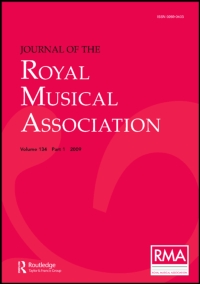No CrossRef data available.
Article contents
Jan Pieterszoon Sweelinck
Published online by Cambridge University Press: 01 January 2020
Extract
What is it that makes the work of a composer classical? The question is no mere oratorical one, for it affects directly the discussion of the work, and the influences which made that work and put it into the position it holds to-day, of one whose name is more widely known than is his music, and yet whose name is far from being a household word even among musicians of some learning. “It is as an organist,” says Mr. Reginald Lane Poole, in his notice of Sweelinck which has run through several editions of Grove's Dictionary of Music and Musicians, “It is as an organist and the founder of a school of organists that Sweelinck had the most influence, an influence which made itself felt through the whole length of Northern Germany. In the next generation nearly all the leading organists there had been his scholars; his learning and method were carried by them from Hamburg to Danzig. His pupil Scheidemann handed down the tradition to the great Reincke—himself a Dutchman—from whom, if we are to accept a statement supported alike by unanimous testimony and by exhaustive analysis of the works, it turned to find its consummation in Sebastian Bach.” This summing up of the position of Sweelinck, although in itself absolutely accurate and the conclusion of an article that is one of the best studies of the life and work of the great Amsterdam master, combined with the fact that at the present time none of the manuscripts of his works are to be found in Holland, has led sometimes to a misapprehension of the national position of the man and his music. He has, among less accurate and careful writers, been classed as a great German, and as one merely “whose organ works are of great historical interest.” Thanks to the researches of Professor Max Seiffert and others and particularly lately to those of Bernhard van der Sigtenhorst Meyer, to whose recent book on Jan P. Sweelinck en zijn Instrumentale Muziek I am indebted for most of the facts contained in this paper, we know that he was essentially a Dutchman by birth and family, though it is not unlikely that some of his relations, as happens with most families in Holland, settled at one time or another in towns on the Eastern side of the frontier.
- Type
- Research Article
- Information
- Copyright
- Copyright © Royal Musical Association, 1934
References
1 Proceedings. Vol. XLIV, p. 182.Google Scholar


